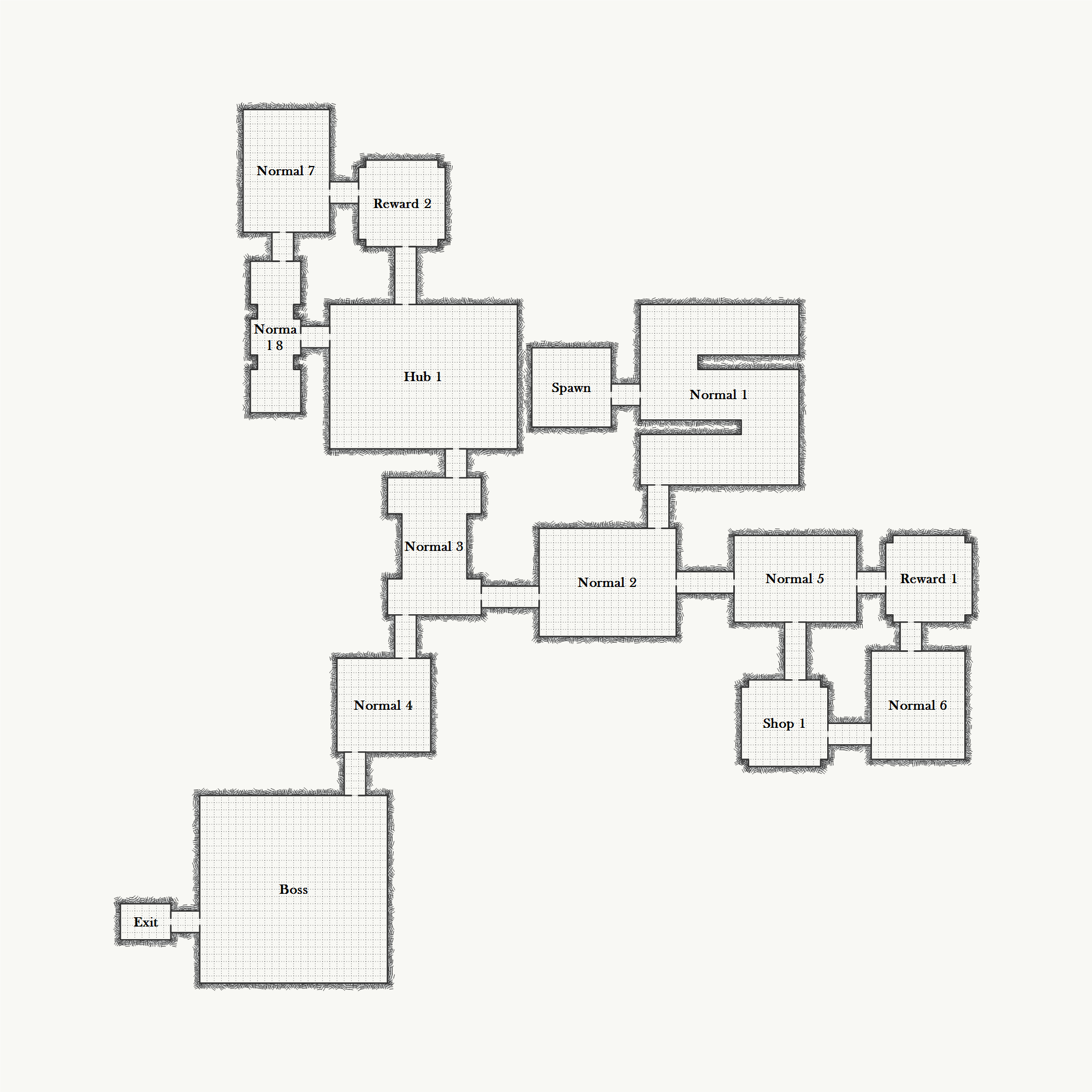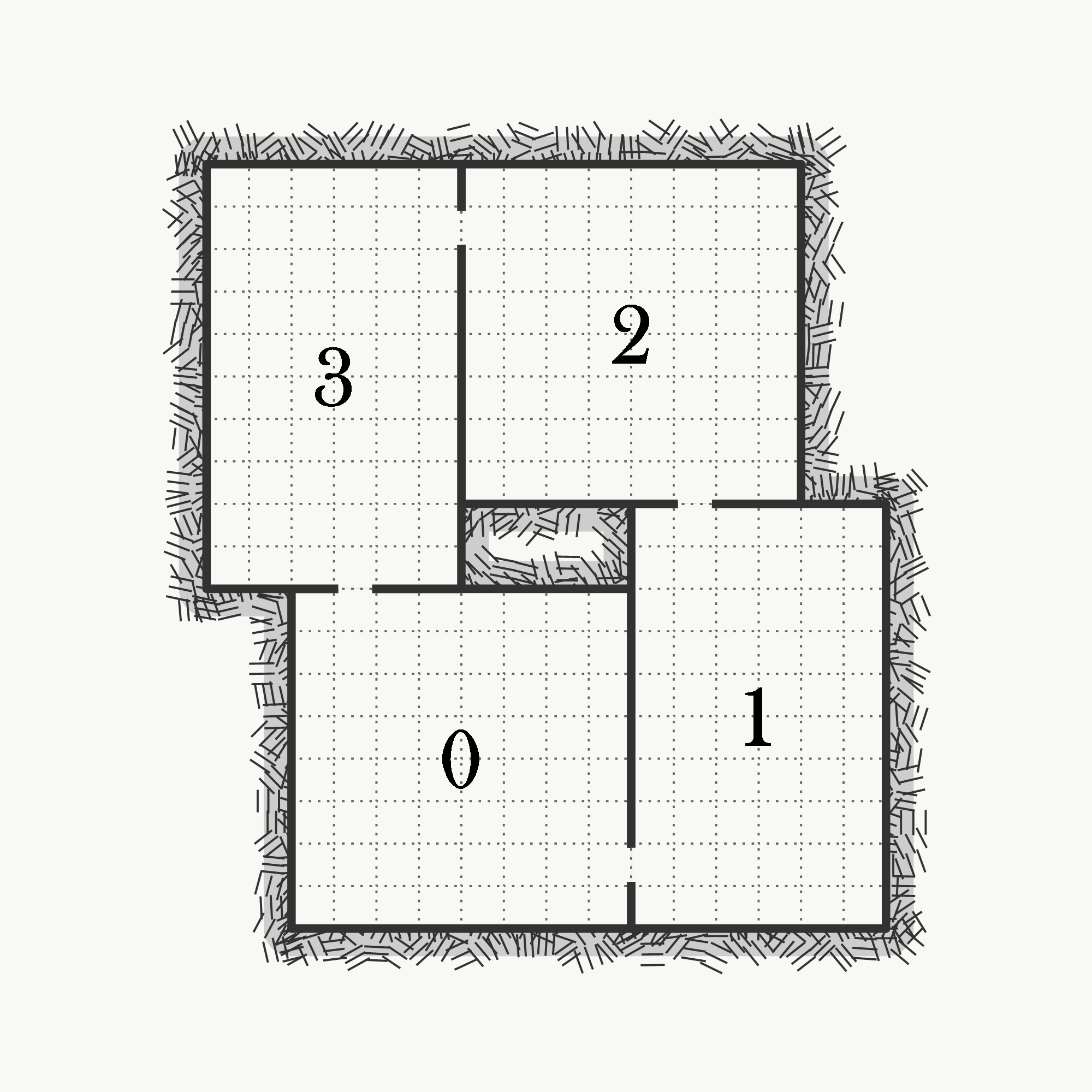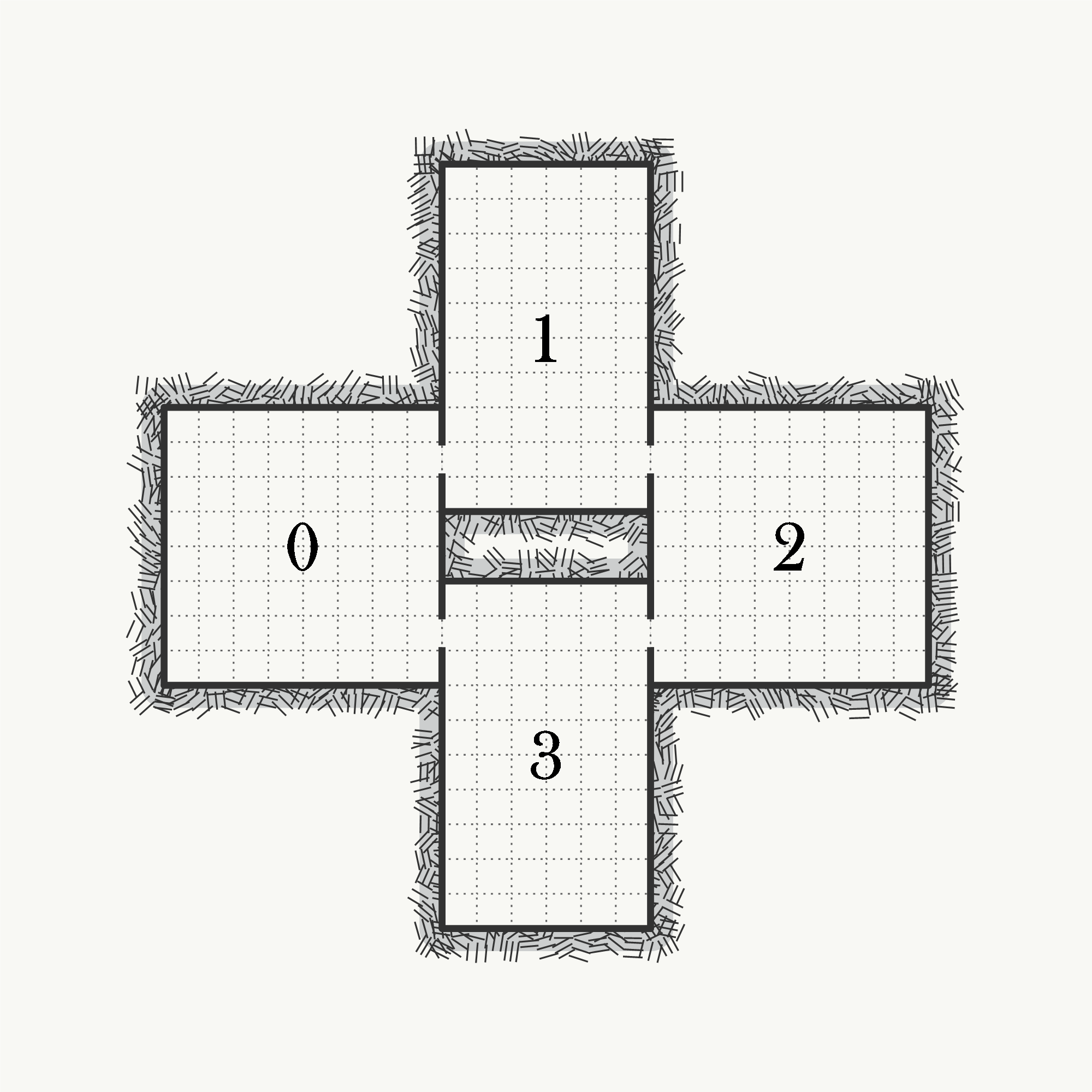Introduction | Key features | Limitations | Getting started | Installation | Example | Get in touch
(Design of exported levels inspired by Watabou's One Page Dungeon)
This project is a .NET library for procedural generation of 2D dungeons (and platformers) and aims to give game designers a complete control over generated levels. It combines graph-based approach to procedural generation with handmade room templates to generate levels with a feeling of consistency. If you are using Unity, make sure to check out Edgar for Unity - Unity plugin based on this library. And I have also written a post about the graph-based approach on my blog.
You decide exactly how many rooms you want in a level and how they should be connected, and the generator produces layouts that follow exactly that structure. Do you want a boss room at the end of each level? Or a shop room halfway through the level? Everything is possible with a graph-based approach.
The appearance of individual rooms is controlled with so-called room templates. These are pre-authored building blocks from which the algorithm chooses when generating a layout. Each room template consists of an outline polygon and a set of available door positions. You can also assign different room templates to different types of rooms. For example, a spawn room should probably look different than a boss room.
The library is currently being refactored to make the API nicer and make it easier to add new features in the future. As a result, only the most important logic is documented and I would not recommend looking into the insides of the algorithm. If you want to know how the algorithm works, check out my blog post.
- Procedural dungeon generator
- Describe the structure of levels with a graph of rooms and connections
- Control the appearance of rooms with handmade room templates
- Connect rooms either directly with doors or with short corridors
- Export to JSON or PNG
- Supports .NET Standard 2.0
- Currently works only on the 2D grid but may support 3D in future
- Comprehensive documentation with multiple examples
- Implicit support for keys and locks - just define the connectivity graph hovewer you like
- The library is currently being refactored - see the caution above.
- Some level graphs may be too hard for the generator - see the guidelines
- The graph-based approach is not suitable for large levels - we recommend less than 30 rooms
Install the asset (instructions are below) and head to the documentation. The documentation describes all the basics and provides multiple examples.
Download the latest version from Nuget.
Below is a very simple setup of the generator. We create two rectangular room templates, add 4 rooms to the level description and connect the rooms so that they form a cycle. Be sure to check the documentation to see multiple commented examples.
// Create square room template
var squareRoomTemplate = new RoomTemplateGrid2D(
PolygonGrid2D.GetSquare(8),
new SimpleDoorModeGrid2D(doorLength: 1, cornerDistance: 1)
);
// Create rectangle room template
var rectangleRoomTemplate = new RoomTemplateGrid2D(
PolygonGrid2D.GetRectangle(6, 10),
new SimpleDoorModeGrid2D(doorLength: 1, cornerDistance: 1)
);
// Create a room description which says that the room is not a corridor and that it can use the two room templates
var roomDescription = new RoomDescriptionGrid2D(
isCorridor: false,
roomTemplates: new List<RoomTemplateGrid2D>() { squareRoomTemplate, rectangleRoomTemplate }
);
// Create an instance of the level description
var levelDescription = new LevelDescriptionGrid2D<int>();
// Add 4 rooms to the level, use the room description that we created beforehand
levelDescription.AddRoom(0, roomDescription);
levelDescription.AddRoom(1, roomDescription);
levelDescription.AddRoom(2, roomDescription);
levelDescription.AddRoom(3, roomDescription);
// Add connections between the rooms - the level graph will be a cycle with 4 vertices
levelDescription.AddConnection(0, 1);
levelDescription.AddConnection(0, 3);
levelDescription.AddConnection(1, 2);
levelDescription.AddConnection(2, 3);
// Create an instance of the generate and generate a layout
var generator = new GraphBasedGeneratorGrid2D<int>(levelDescription);
var layout = generator.GenerateLayout();
// Export the resulting layout as PNG
var drawer = new DungeonDrawer<int>();
drawer.DrawLayoutAndSave(layout, "layout.png", new DungeonDrawerOptions()
{
Width = 2000,
Height = 2000,
});Here are two layouts that were produced from this example:
If you have any questions or want to show off what you created with Edgar, come chat with us in our discord server. Or if you want to contact me personally, use my email ondra-at-nepozitek.cz or send me a message on Twitter at @OndrejNepozitek.









